Pulse New York's Playful Cosmopolitanism
Pulse New York is continuing its role as one of the more user-friendly offerings this fair week, with a flair for the international and an undercurrent of the offbeat in its location at Chelsea's Metropolitan Pavilion. Last year was the first of its eight editions to run alongside Frieze, and despit
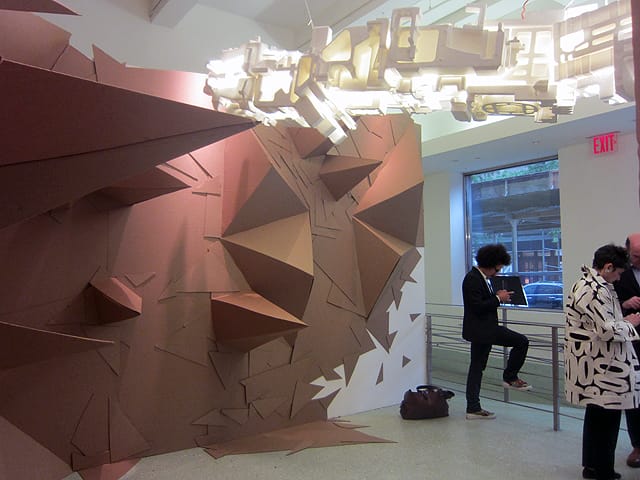
Pulse New York is continuing its role as one of the more user-friendly offerings this fair week, with a flair for the international and an undercurrent of the offbeat in its location at Chelsea’s Metropolitan Pavilion. Last year was the first of its eight editions to run alongside Frieze, and despite the torrential rain this morning, the preview felt buoyant, with an emphasis on the playful. While there were some corners of studied abstraction, overall the artworks were spirited creations that embraced vibrant tones.
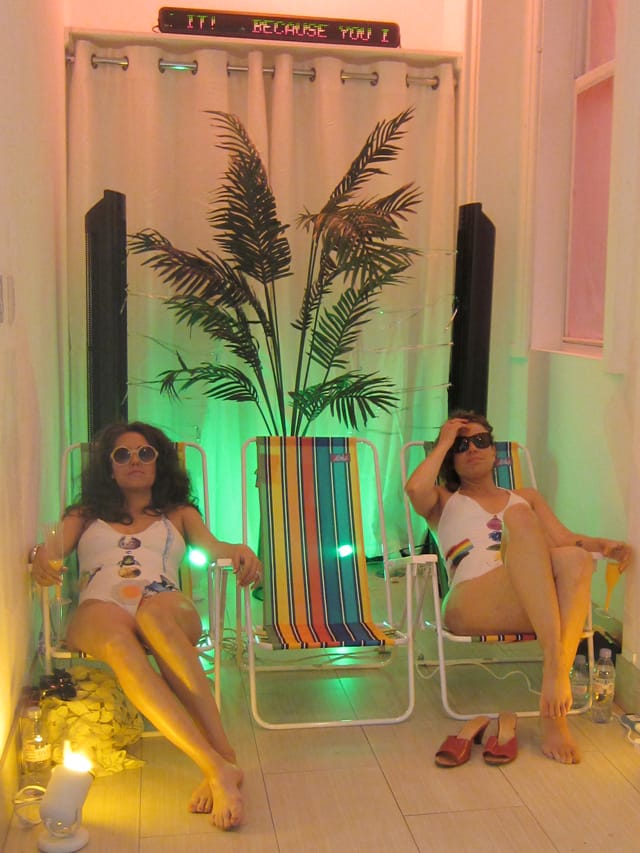
This playful, colorful overview is the fair feel that Pulse has annually embodied, this year with 60 international and national galleries, 13 of which are part of the Impulse section focusing on individual artists. There is also the sprinkling of video installations and performances in the mix, including the vacation corner presented by Honey Space with Lisa Lozano and Tora Lopez lounging on lawn chairs, drinking some of the preview mimosas and inviting fair goers to take a moment to relax and use some Purell. The morning crowd didn’t seem to be stressed out enough for it yet, but hopefully those enthusiasts who take on multiple fairs in a day will discover this little break for their art-weary feet and eyes.

I also enjoyed Tim Youd’s “Typing Tropic,” performed with Los Angeles-based Coagula Curatorial, where the artist is using an old Underwood Standard typewriter, the same writing tool used by Henry Miller, to chronicle all of the author’s Tropic of Capricorn on one page heavy with ink. Henry Miller’s writing always has a frantic energy of human futility to it that’s a good fit for such a performance of the absurd.
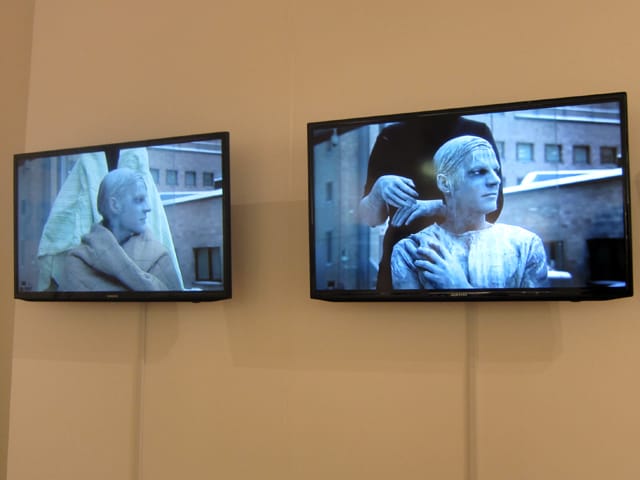
As for the videos, the one to catch my attention was Jani Ruscica’s “Screen Test (For a Living Sculpture),” presented by Otto Zoo out of Milan, where the stillness and movement of a person painted as a living sculpture was captured in a triptych that had a lovely, drawn out movement to it, even if its focus as a study of performance was a bit limited for its potential.

Yet performance and video really aren’t the focus of Pulse, and while photography and paintings in rich shades of every color imaginable abounded, I really was drawn more to the sculptural work, especially with the diminutive linen figures of emerging Japanese artist Miki Taira with Tokyo Gallery. Each one has an elaborate narrative that made the label text stretch to almost the height of the art pieces. For example, one black hole-faced figure called “The Head Monk’s Favorite Poisonous Wine” is posed on a pile of shattered ceramics, and the story, taken from the Saitama Prefecture, goes that a head monk used to secretly sneak sweet rice wine, and a young monk got curious and although the older monk had said it was poisonous, tried the wine for himself. Unable to control his alcoholic thirst he gulped it all down, and unsure how to cover his mistake, he smashed the older monk’s favorite dish, and said that he drank the wine to try to poison himself and then rejoiced to the old monk that he was not dead.

Taira’s linen characters seem like they would play well with Jesse Small’s “ADHOCFIGHTERS,” shown with Nancy Hoffman Galley, which are based on robots the artist found and remixed, and then replicated as ceramics. They weren’t quite as polished as Small’s Pac-man-based ceramics that I’d seen before, but I still enjoyed the juxtaposing of high and low culture with very fragile robots.

Pulse is one of the most contemporary arts-centered of all the fairs, so it was a little surprising to see a concentration on early 20th century outsider art with Brooklyn-based Stephen Romano Gallery, which has concentrated on researching and presenting the work of Charles A.A. Dellschau, a butcher who drew imaginary airships as the self-appointed head draftsman of the imaginary “Sonora Aero Club.” I thought they were fascinating, although out of place among the swarm of contemporary art around them, yet that would have been true for the self-taught artist himself no matter when he was exhibited.
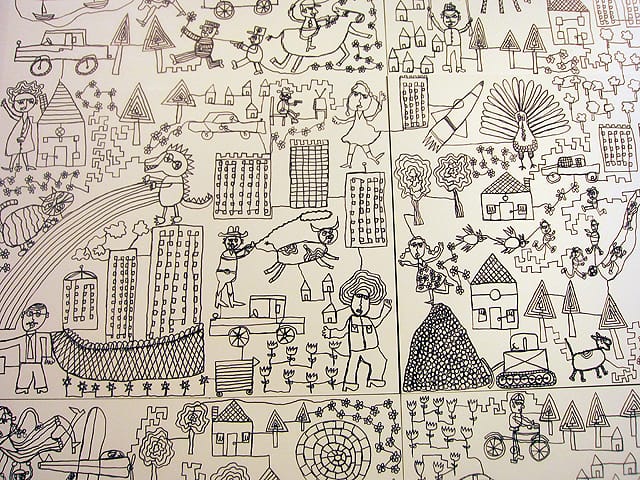
However, that touch of outsider art did offer an interesting counterpoint to the “New Southern Vernacular” mini exhibition with David Lusk Gallery out of Memphis, which looked at the current visual beat of the deep south. It was a little all over the place with some riffs on stereotypes, like a video from Dwayne Butcher pouring cheap beer on himself in the back of a pickup truck, Greely Myatt’s druggy reclaimed signs that were sliced to spell out phrases like “Weed” and “Gas-o-lean,” and the giant rambling drawings of Tad Lauritzen Wright, who despite receiving an MFA has that exuberant outsider art-feel, with his one-line drawings that go from lassoing cowboys to terrorizing Godzilla monsters.
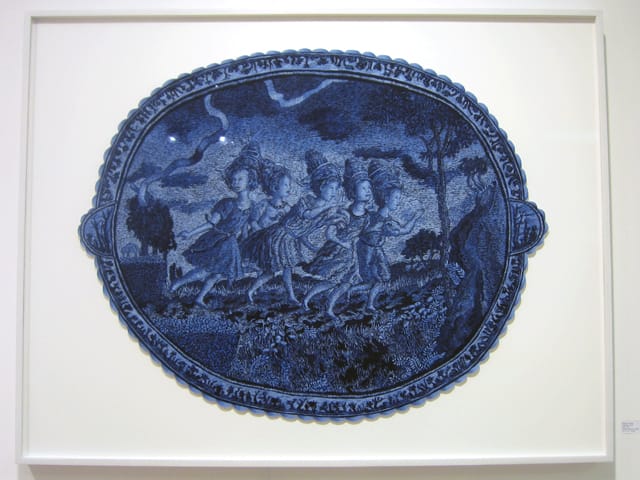
One of the perks of Pulse, like most all art fairs of course, is there being so many galleries suddenly accessible from afar, and along with the Memphis artists, I found Philadelphia-based Gallery Joe to have an interesting and eclectic array of drawing-based art, with Marilyn Holsing’s detailed blue depictions showing scenes with a sort of classical mystery in their wandering figures being the stand out.
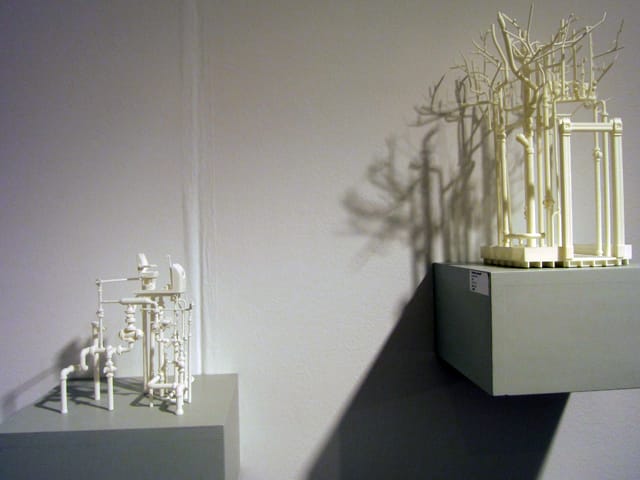
Up in the second floor Impulse section that focused on individual artists, I found the tiny 3D printed contraptions by Guillaume LaChapelle with the Montreal-based Art Mûr to be intriguing. Although I don’t think they went far enough in their unpainted-model aesthetic, I found the juxtapositions of objects to be engaging, like a horse head turned into a car or a book that contained an abyss of a library in its receding spine.
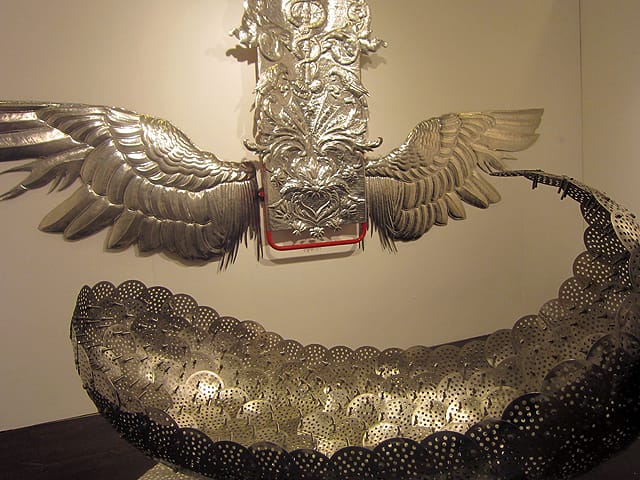
Pakistani artist Adeela Suleman also had some creative objects built from industrial materials at New York-based Aicon Gallery, with found metal being bent or melded into something she found to be more beautiful, with a wall piece that had birds and twisted snakes being especially striking, although the boat-like sculpture beside it was more remarkable for turning the plainness of grates and screws into an elegant shape.
Overall, there’s nothing at Pulse New York that’s going to totally blow your mind or change your perception of what contemporary art is or where it’s going, and the majority of the work won’t require any sort of intense examination of that state of the world or your inner self. Yet I found it to be an enjoyable portal for some art exploring, where some whimsy and color is always welcome in the visual cascades of this fair week art.
Pulse New York is May 9 to 12 at the Metropolitan Pavilion (125 West 18th Street, Chelsea, Manhattan).





